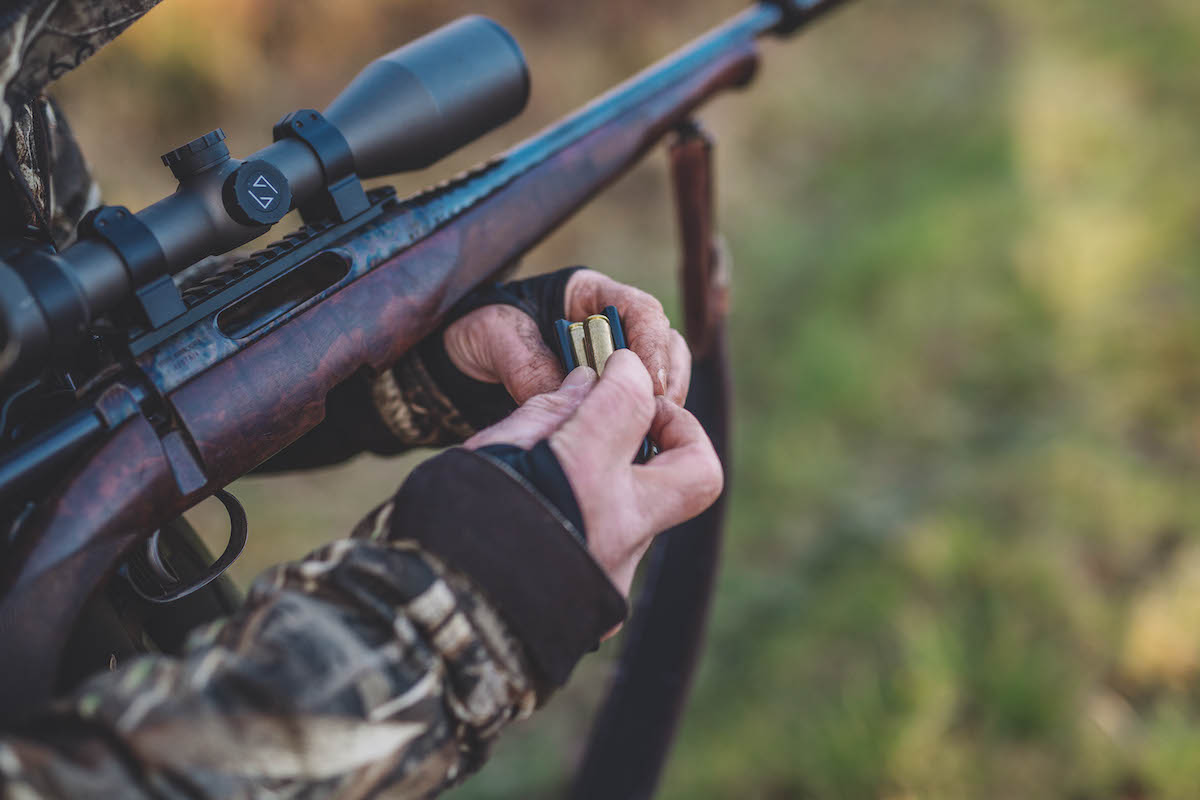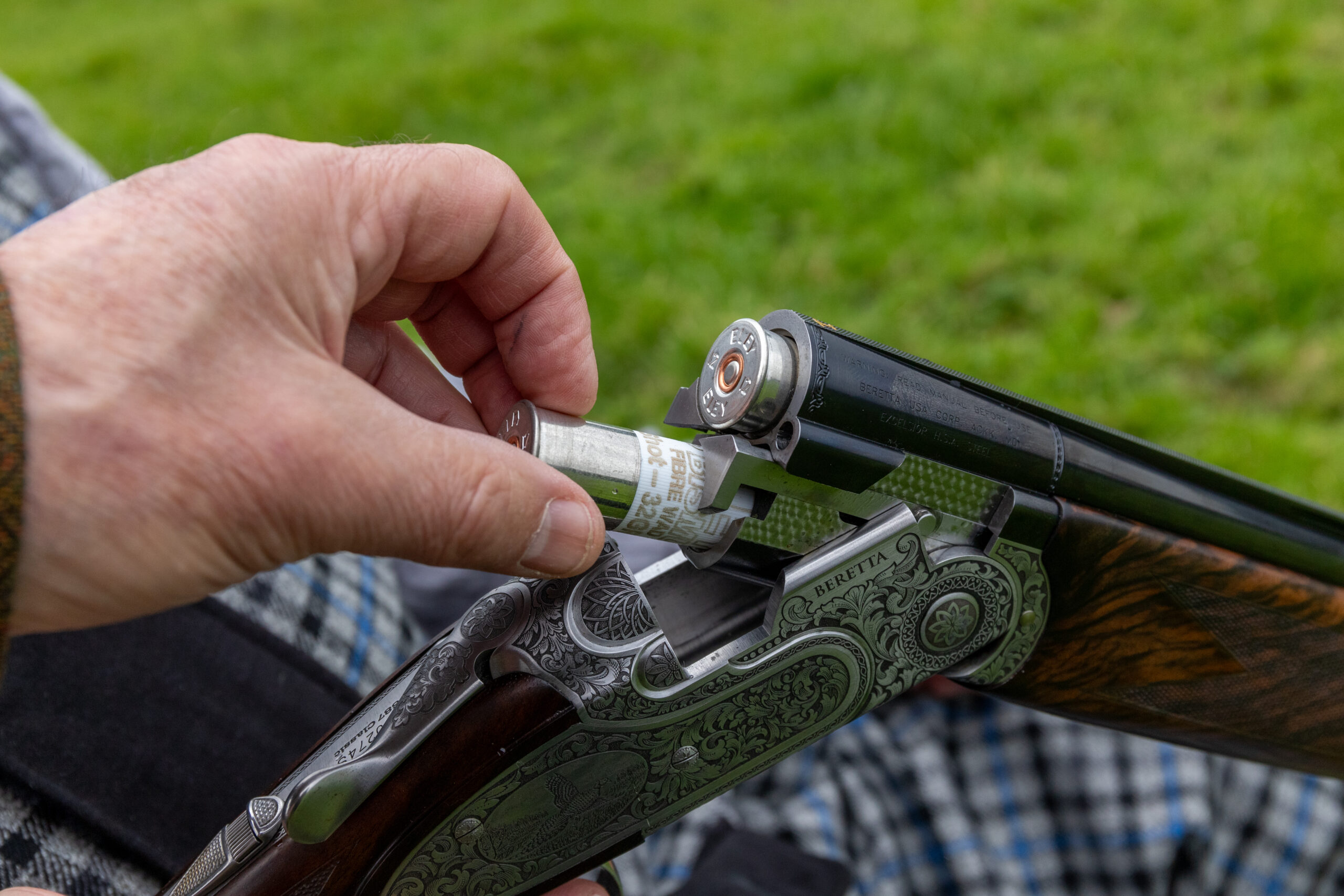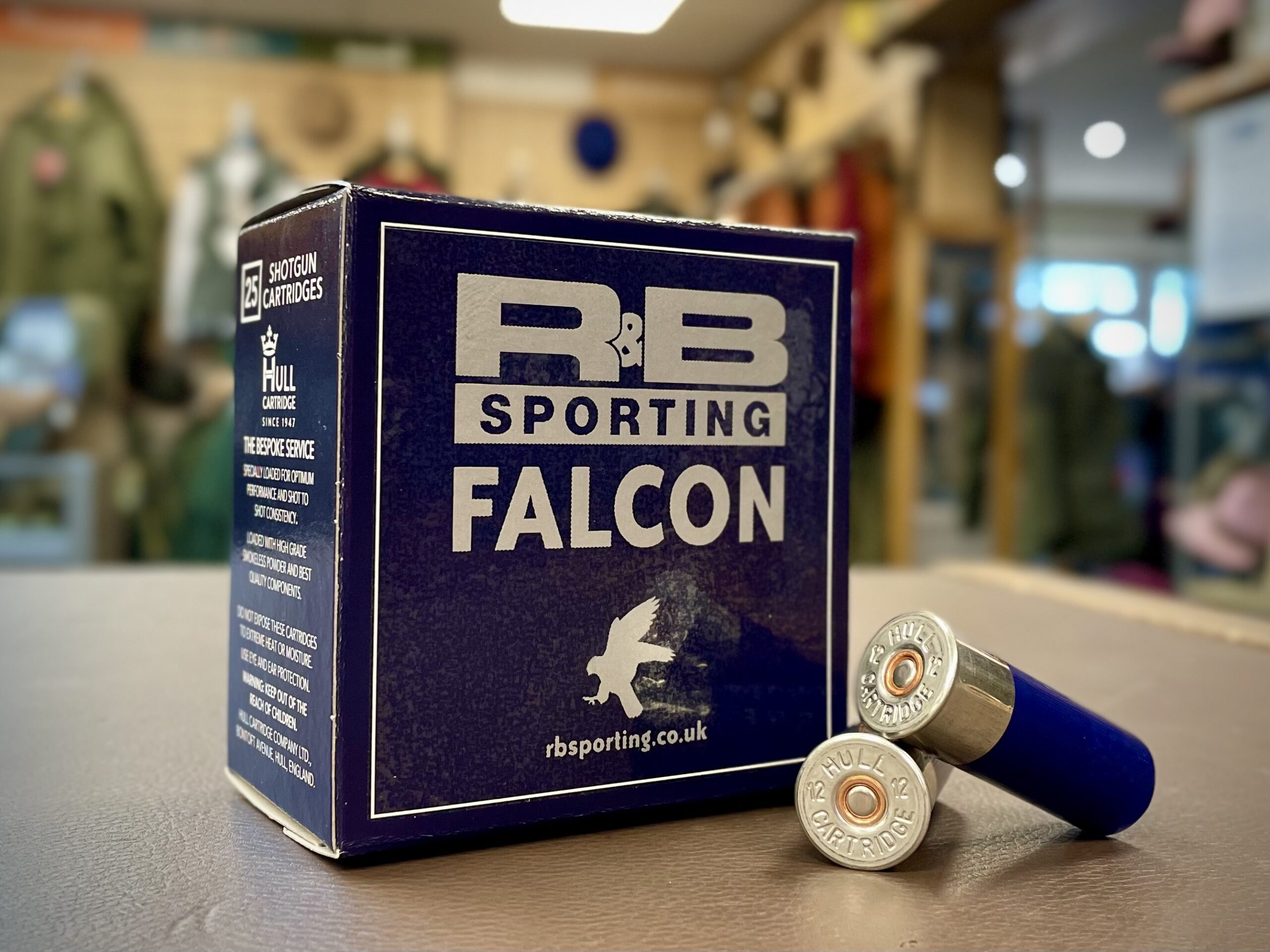Testing non-lead ammunition in .243 calibre. How accurate is it?
When testing ‘non-toxic’ ammunition in .243, the nation’s favourite stalking calibre, Graham Downing is fairly impressed

Graham tests the ammo through his custom Steyr Mannlicher Classic on his private range at 100m
Introduced in 1955, the .243 Winchester cartridge is reckoned to be the most popular 6mm round in use today for hunting medium-sized game and for target shooting. Designed by necking-down a .308 Win case to take a .243in (6.17mm) bullet, the round is capable of achieving high velocities thanks to the large powder capacity of its case and the fact it shoots flat out to most ranges at which one might expect to engage live quarry. It is not surprising that BASC has estimated that nearly 14% of all rifles held on certificate in Britain — around 60,000 — are chambered for the .243 Win cartridge.
It is a forgiving round with low recoil. I moved to it from .308 for my everyday stalking some years ago because the lack of recoil enabled me to watch the reaction to the shot so much more easily than with the .308 cartridge, which I now reserve for larger species such as red deer.
Non-lead ammunition in .243
But there’s a problem. As we all know, a wholesale switch to non-lead ammunition is now taking place, and because copper is less dense than lead, the smaller centrefire calibre bullets must be longer if they are to approach a weight comparable to that of their lead counterparts. Furthermore, longer bullets require a faster twist rate if they are to be stabilised in flight, making the shooting of a .243 bullet from a 1 in 10 twist rate barrel potentially marginal in terms of accuracy at range.
Lighter bullets must also be driven faster if they are to achieve the same muzzle energy as heavier ones, and this presents a problem for manufacturers trying to produce a round that meets the muzzle energy requirements of UK deer legislation.
Thankfully, ammunition manufacturers have stepped up to the mark, and we now have a wide range of .243 non-lead ammo. However, individual rifles have individual preferences, and when deciding which non-lead round works best for you, it is sensible to try a variety of different cartridges and see what works best in your own rifle.
That is exactly what I did with four of the current offerings: Hornady’s Outfitter, loaded with an 80-gr CX bullet; Sako’s Powerhead II, loaded with an 80-gr Barnes TTSX bullet; Sako’s Powerhead Blade 80-gr round and Lapua’s Naturalis 90-gr round. For control, I used the RWS 100-gr soft-point lead round, which has been the regular diet of my .243 rifles.

Graham Downing tries out four non-toxic rounds in 243 and finds the Lapua Naturalis the best for his set-up
Private range
I shot all of these cartridges from the rifle I use for all my regular low ground stalking, a custom Steyr Mannlicher Classic with a 19¼in barrel with 1 in 10 twist, fitted with a Lawrence Precision titanium moderator. The ammunition was shot over my own private range at 100m.
Before putting any rounds downrange, I checked everything across my Caldwell chronograph. While the RWS lead and Lapua non-lead rounds achieved the 1,700ft/lb required for the shooting of all deer in England and Wales, none of the others did, though they all topped the 1,000ft/lb necessary for muntjac and Chinese water deer.
First up was the RWS control, which left the rifle at 2,790fps averaged over three shots, generating 1,729ft/lb and producing a 33mm group. So far, so good. The first of the non-lead rounds was Lapua’s Naturalis 90-gr cartridge featuring a long, tapered, round-nosed copper bullet with a green polymer tip. This is the cartridge I migrated to when the decision was taken by me — or more correctly by my gamedealer — to move from lead, since it was weight-for-weight the closest I could get to my trusted 100-gr lead bullet.
To be fair, I have had some five months of very satisfactory experience with this non-lead round, of which more later. On the range there were no surprises. The Lapua cartridge almost exactly matched my lead round with a 35mm group and a muzzle velocity of 2,934fps producing 1,721ft/lb of muzzle energy.
Next, I shot Hornady’s Outfitter cartridge, with its monolithic copper alloy CX bullet with red heat shield polycarbonate tip and nickel-plated case. I was impressed. The Hornady bullet achieved 2,997fps, delivering 1,596ft/lb of muzzle energy, but drilled a 19mm group through my target, almost clover-leafing. Pity the poor muntjac that gets in the way of that round, I thought.
Sako’s offerings were next. The Powerhead II cartridge, with its blue polycarbonate tip, sent its 80-gr payload over the chronograph at an average of 2,785fps, generating 1,378ft/lb. The grouping, however, was disappointing and the best I could achieve was 51mm, which is nonetheless well within the 100mm required for humane deer management. Sako’s 80-gr Powerhead Blade did somewhat better in the velocity and energy stakes, departing downrange at 2,921fps with 1,516ft/lb, but the best I could get out of its grouping was 56mm, on a par with its cousin.
Every rifle is different though. All the rounds I tested produced groups well within what would be needed to comfortably pass DSC1, and I have no doubt that the Sako rounds will deliver much better groups through some rifles. Indeed, in trials conducted last year by BASC, the Sako Powerhead II achieved just a tad over 28mm — ironically through a Steyr Mannlicher Luxus. I cannot say how they might perform energy-wise through a test barrel at a proof house, but through my rifle at least, neither of the Sako rounds, nor indeed the Hornady, would be legal for anything but muntjac and Chinese, which is a bit of a drawback.
Lapua’s Naturalis with its 90-gr payload, however, is well capable of doing the business. The round has been about for some years now, so it has something of a track record. I first used it in the field in February this year, and although it had performed well on the range, it was not without a certain amount of trepidation that I went stalking with it for the first time. That evening it knocked over three muntjac for me, all of them dropping where they stood, and I have not used lead through my .243 in anger since.
 An impressive tally
An impressive tally
Indeed, since February the Lapua Naturalis round has delivered me 15 muntjac, six Chinese water deer, three roe and an unlucky fox. I have had one miss, and only one deer required the attentions of my dogs — a muntjac I had shot with the Krypton just minutes after start time and which, after I had finished my stalk two hours later, young Holly tracked some 30 yards from the shot site into a bramble bank where it lay dead.
True, I have not shot anything bigger than a roe with copper, but the morning after I knocked down those first three muntjac, my wife had a fallow buck walk out in front of her high seat, which she dropped with a chest shot using the Lapua 90-gr. The buck turned the larder scales at 53kg clean, with head and feet off, so it was a big buck and it had a good exit wound, which would have aided tracking if necessary — which it wasn’t, since it lay dead 25 yards from the shot site. Thus I can vouch for the Lapua’s effectiveness on deer as large as you’d want to engage with a .243. I have only managed to recover one bullet, which had mushroomed perfectly.
In writing this piece, I would have loved to have shot a muntie with the Hornady round for comparison’s sake, but despite two outings loaded up with the Hornady, the stars were truly against me and I encountered none. But in time, though, I suspect the Hornady Outfitter will come up trumps.

Graham Downing in a high seat

 An impressive tally
An impressive tally






